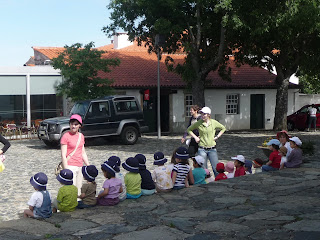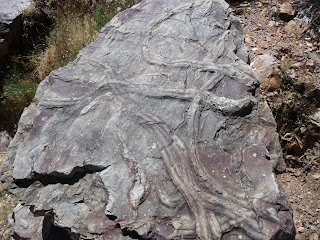June 7th ~ Aire sur l’Adour
Awoke to a better day, but still quite a bit of cloud. Decided to take a bit of a detour to Lourdes, as we were reasonably close. We had planned to travel up via the Millau Bridge and the Central Massiff, but this was too far, and we couldn’t agree on which of the many sights to see there. Also , the hand-break on the van is not holding the van on steep hills, and this area is very mountainous. We were delayed an hour or so in Orthez getting the hand-break . The VW garage could’nt do it, but a very helpful Australian mechanic arranged for us to go to another garage , who “fixed” it in about 20 minutes.
Stopped off at small village of Coarraze, and parked close to a small Dolmen in someones garden. Also stopped at Lestelle Betharram, another small village on the river Gave Pau, still in full spate from the melting snow in the Pyrenees, and a beautiful turquoise colour . Huge monastery there. On to Lourdes, with its splendid Church, Basillica and Grotto .....more history to follow.....
Walked around taking in the atmosphere of so many people of all nationalities, many of them sick and infirm. The town is a mixture of high religious tourism, and people praying openly in the streets and squares. Toured all the sights and filed past the Grotte, and got 5 litres of holy water to see if it improves our health.
After lunch, about 3 pm, set off North via Tarbes and on to Aire sur l’Adour, a picturesque village with campsite by the river. Added bonus’ were a washing machine and wifi. By the late afternoon, evening, it was very hot and sunny, and being by a river, quite a few mosquitos. After supper, walked round the village , which was pretty dead by then, and back to van to catch up on blog , e mails etc..






.JPG)






.JPG)

.JPG)
.JPG)
.JPG)

.JPG)


















.JPG)

.JPG)
.JPG)
.JPG)
.JPG)
.JPG)
.JPG)
.JPG)
.JPG)
.JPG)
.JPG)
.JPG)
.JPG)
